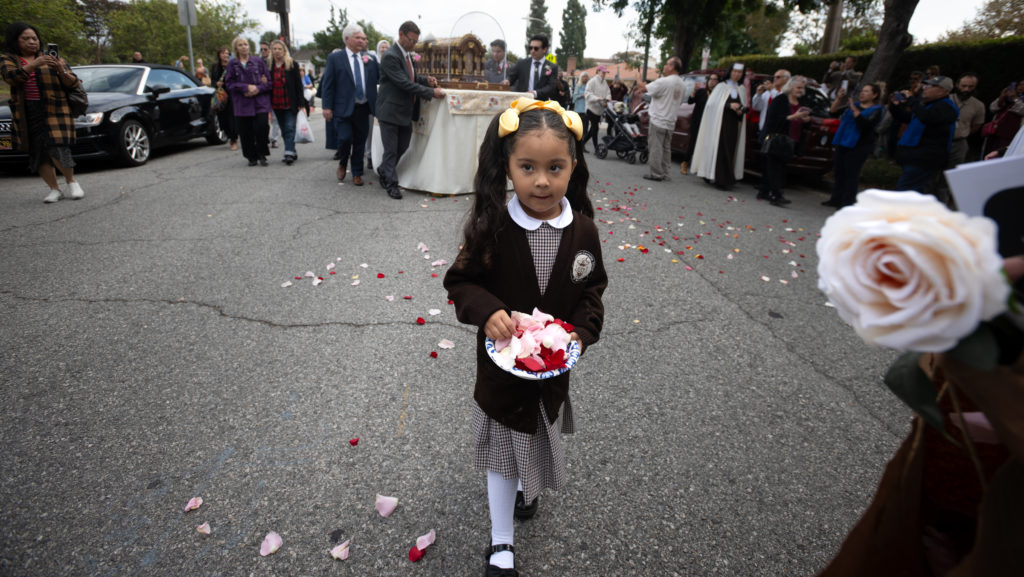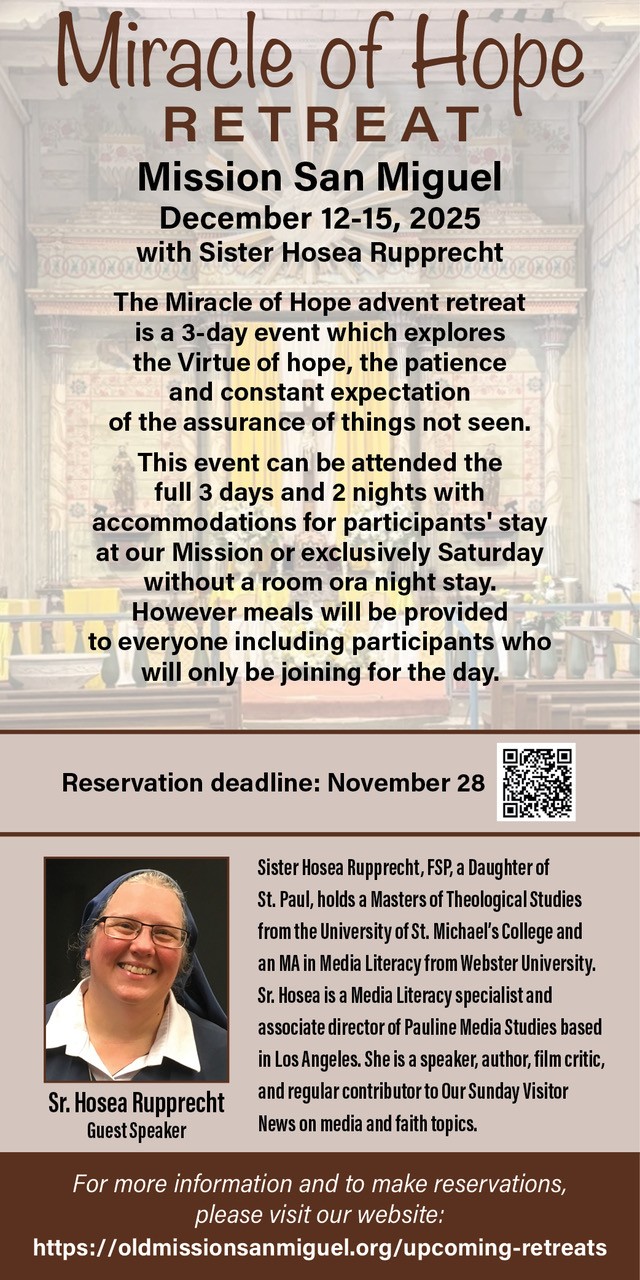With a smile on her face and a rose in her hand, Monica McNamara practically floated out of church after venerating the visiting relics of St. Thérèse of Lisieux.
McNamara had a great connection to the saint, saying the French Carmelite’s intercession had once lifted her spirits during a moment of great loneliness, a time when she prayed for a sign of God’s love and the saint’s signature flower.
“The next day, I opened the door and there was a huge case of roses,” said McNamara, who attends Our Lady of Grace Church in El Cajon. “I believe [Thérèse] sent me those roses through my friend. It made me feel like she was listening, like God was listening.
“It completely impacted my faith.”
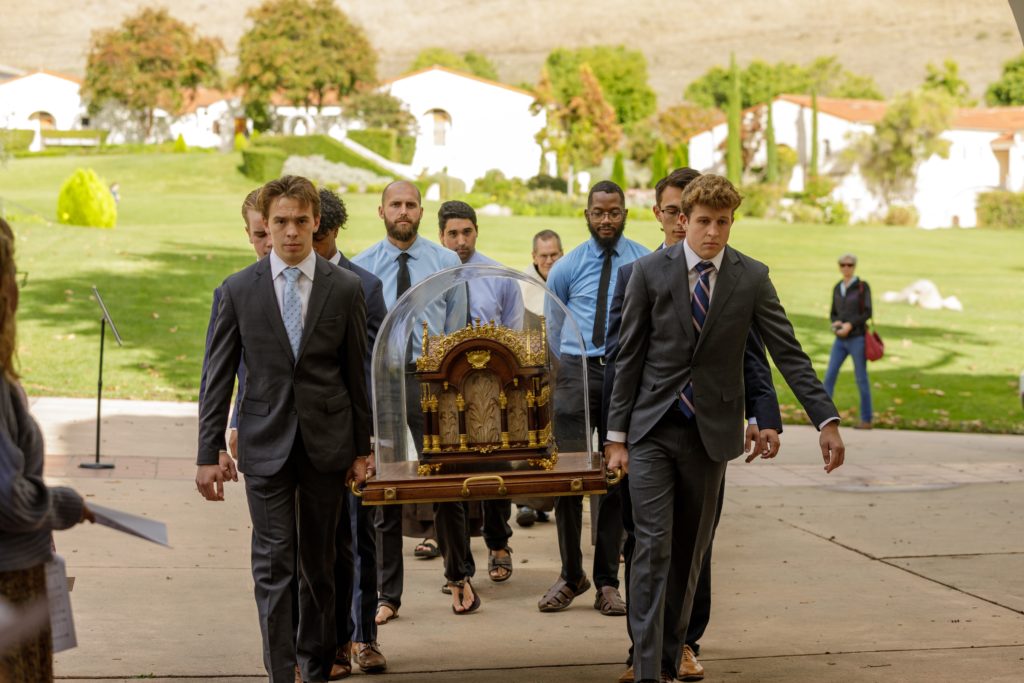
McNamara was among the estimated 10,000 people in Southern California who viewed Thérèse’s first-class relics as they toured the Archdiocese of Los Angeles Oct. 11-16, the first time they’d been in the U.S. in 25 years.
The tour was part of a nationwide pilgrimage marking the 100th anniversary of Thérèse’s canonization and the Jubilee Holy Year.
Giant banners of the popular saint adorned St. Therese Church in Alhambra, where the first-class relics of bones made their debut before traveling to nearby Sacred Heart Retreat House, Thomas Aquinas College in Santa Paula, and the Santa Teresita home in Duarte. At each location, attendees took in Mass, music, and testimonials.
The reliquary, which contains the relics, is 300 pounds of tropical wood and solid steel. The decorative trim of roses and scrolls is dipped in gold. While venerating, the faithful could touch its protective glass with personal items or fresh roses, thereby making them third-class relics.
During the Oct. 15 Votive Mass at Santa Teresita, Archbishop José H. Gomez said we should honor Thérèse’s relics and model her path to heaven.
“These relics connect us to the ‘flesh,’ the humanity of our saint,” Archbishop Gomez said. “They remind us that on earth St. Thérèse was a simple child of God, just like each of us. In the journey of her life, she loved Jesus and tried to follow him faithfully, just as we are trying to do.”
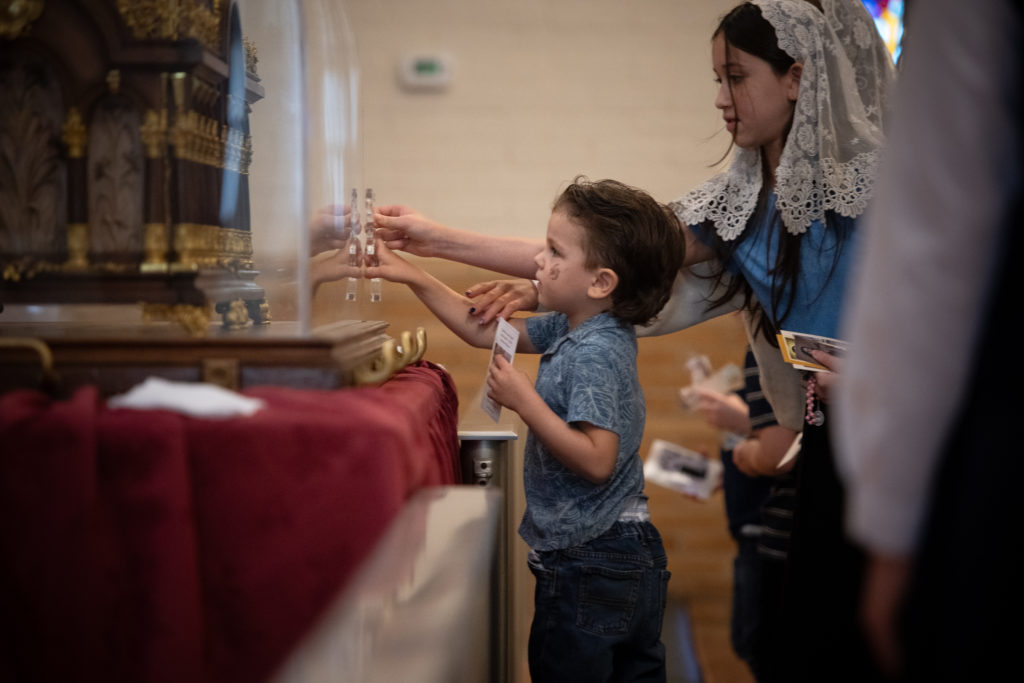
Born Marie Françoise-Thérèse Martin to a pious Catholic family in 1873 in Alencon, France, she successfully pleaded for permission to enter a cloistered monastery at just 15 years old, where she took the name of Thérèse of the Child Jesus and the Holy Face. The young religious then crafted her own approach to spirituality, dubbed “The Little Way,” which says holiness comes from small acts of love and a childlike trust in God.
Theresa Sevilla, named after the saint, came to veneration wearing a T-shirt with the words “Love like Thérèse.” Petite in stature, Sevilla said she connects to “The Little Way” both literally and figuratively.
“I’m a small person; God made me this way,” said Sevilla, a parishioner of Saints Peter and Paul Church in Wilmington. “I don’t need to be big and tall to serve him. I serve him in the littlest way through serving my family.”
Blessings for family are what Oswaldo Jiminez prayed for as he gently pressed his fingertips against the reliquary. The Baldwin Park resident said Thérèse answers prayers — but at a cost.
“Like they say, if you ask something from the saints, they’re going to put you to work,” chuckled Jiminez, a parishioner of St. Therese Church in Alhambra. “So when I asked for her help with a health issue, she told me to come to her church, to come to the Latin Mass because before the pandemic I came here. I started coming back and my health is good.”
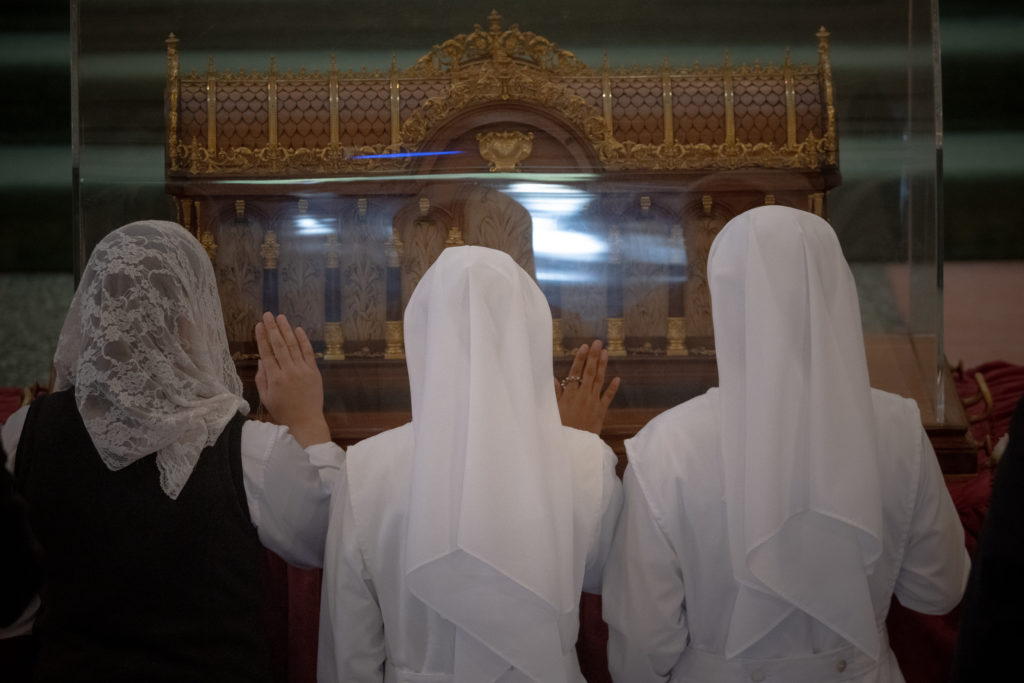
Throughout the tour, Carmelite nuns and friars took to the ambo, sharing how Thérèse impacted their calling. Several referenced “The Story of a Soul,” the collection of Thérèse’s writings that led to her being declared a Doctor of the Church. Sister Shawn Pauline Burke, OCD, said the book helped her pursue a religious life despite others calling the idea “crazy.”
“They would say, ‘Why would you give your life away like that?’ ” said Burke, novice director of Sacred Heart Retreat House. “[But] I found myself drawn into this woman’s love of Jesus and I thought to myself if I am called to that, that’s what I can be, like her.”
Father Donald Kinney, OCD, a French professor turned Carmelite friar, is the national coordinator of the relic tour. He, too, was forever changed by Thérèse, saying her pure and simple words “went right through my heart.” Inside his office at the Carmelite House of Prayer in Oakville, California, Kinney spent the last two-and-a-half years planning the tour’s 40 stops in 11 states with the aid of thousands of volunteers. He said, based on his experience with the previous tour, Thérèse changes lives wherever she goes.
“My prayer for this visit is that St. Thérèse will fill hearts and fill churches,” Kinney said. “There’s a lot of joy here, but people have brought a lot of problems. I am absolutely positive that there will be lots of healings, conversions, and vocations. There is something mysterious and wonderful about [Thérèse].”
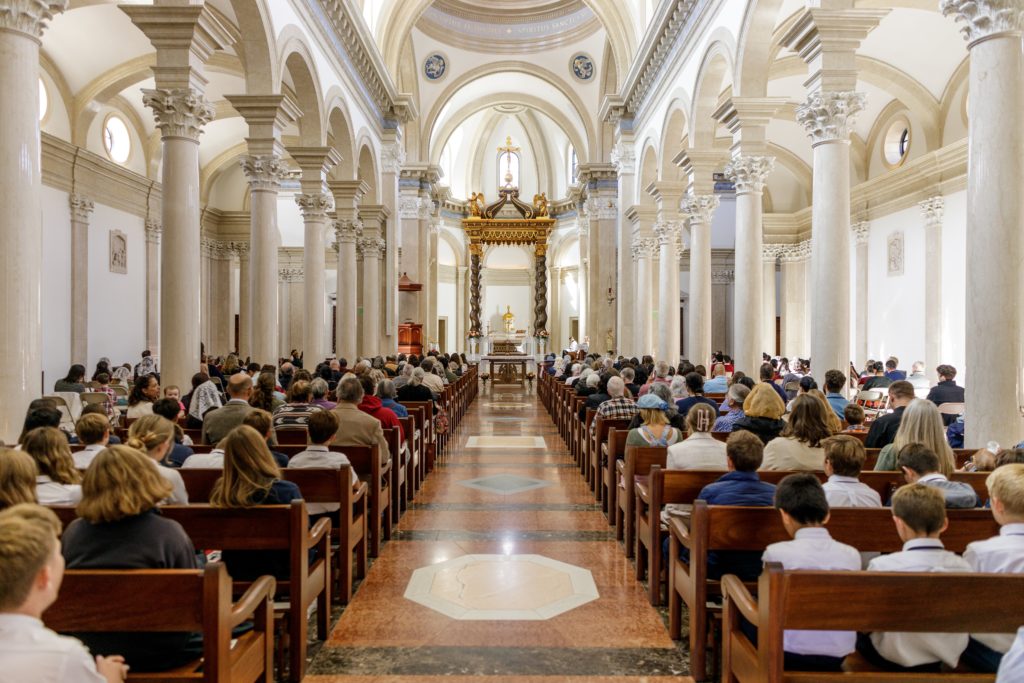
The “Little Flower” herself was no stranger to heartache. She wrote about a childhood full of loss, first at age 4 when her mother died, and later when her older sisters left for the convent. She also battled depression and an overwhelming feeling of religious guilt. Even on her deathbed, suffering with tuberculosis, she experienced a crisis of faith before finally finding peace.
National Catholic speaker Sister Miriam James Heidland, SOLT, was among the throng of venerators. She said Thérèse’s personal challenges made her a saint we can all relate to.
“You see the real story of her life,” Heidland said. “It’s not a sanitized, pious idea, but somebody who had real struggles, who talks about her own emotional difficulties. She’s a reminder to us that Christ is always the way through. It’s not always easy, but it’s beautiful and it’s worth doing.”
Before her death, Thérèse declared she would continue to serve humanity from heaven and send down “a shower of roses.” Amber Cantong Araujo, who helped coordinate the visit at St. Therese parish, put her faith in that promise.
“I was so stressed out about the event going well that I prayed to her, prayed to get a rose,” Araujo said. “Then I looked down in the pew in front of me and I saw a rose on a man’s phone screensaver and I knew St. Thérèse was with me.”
